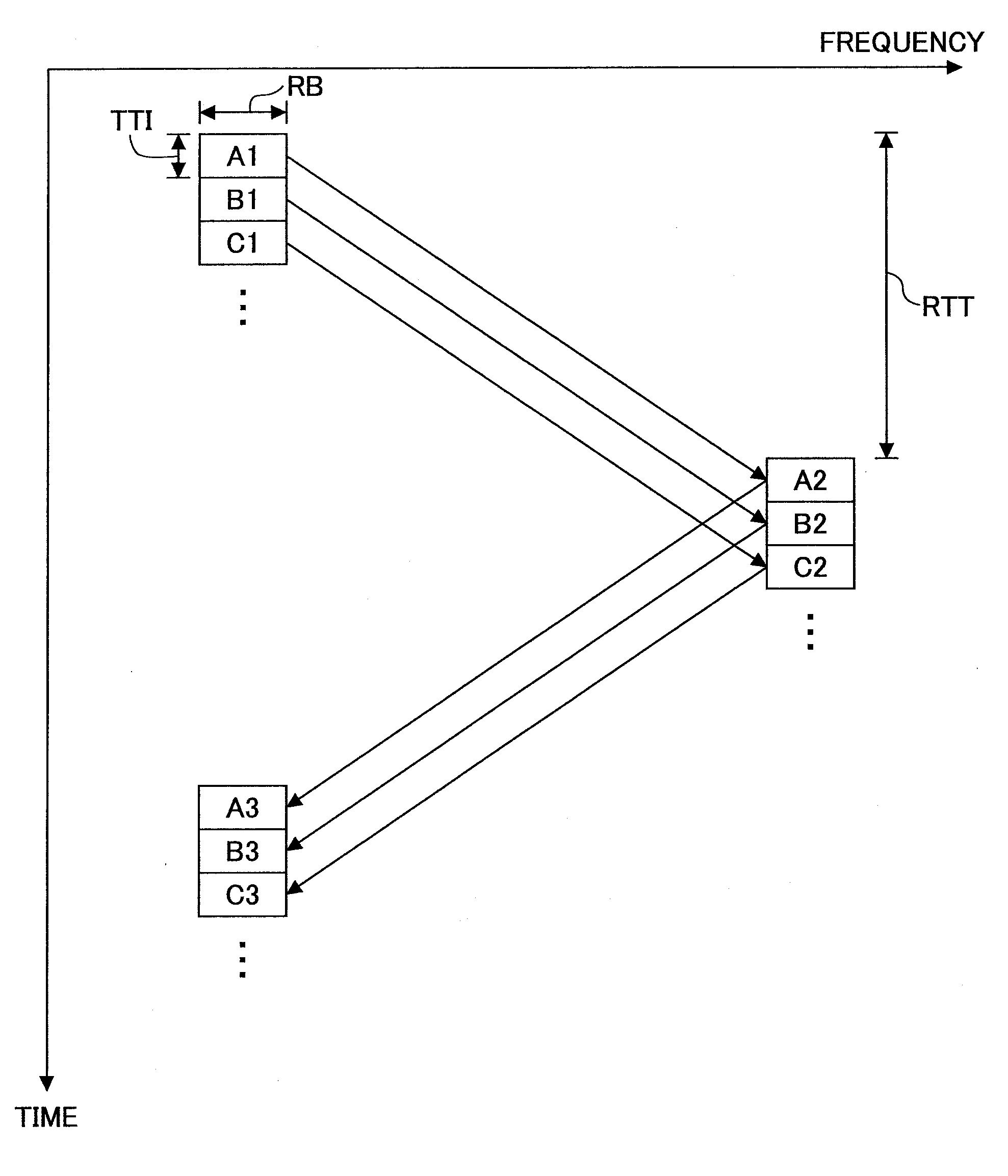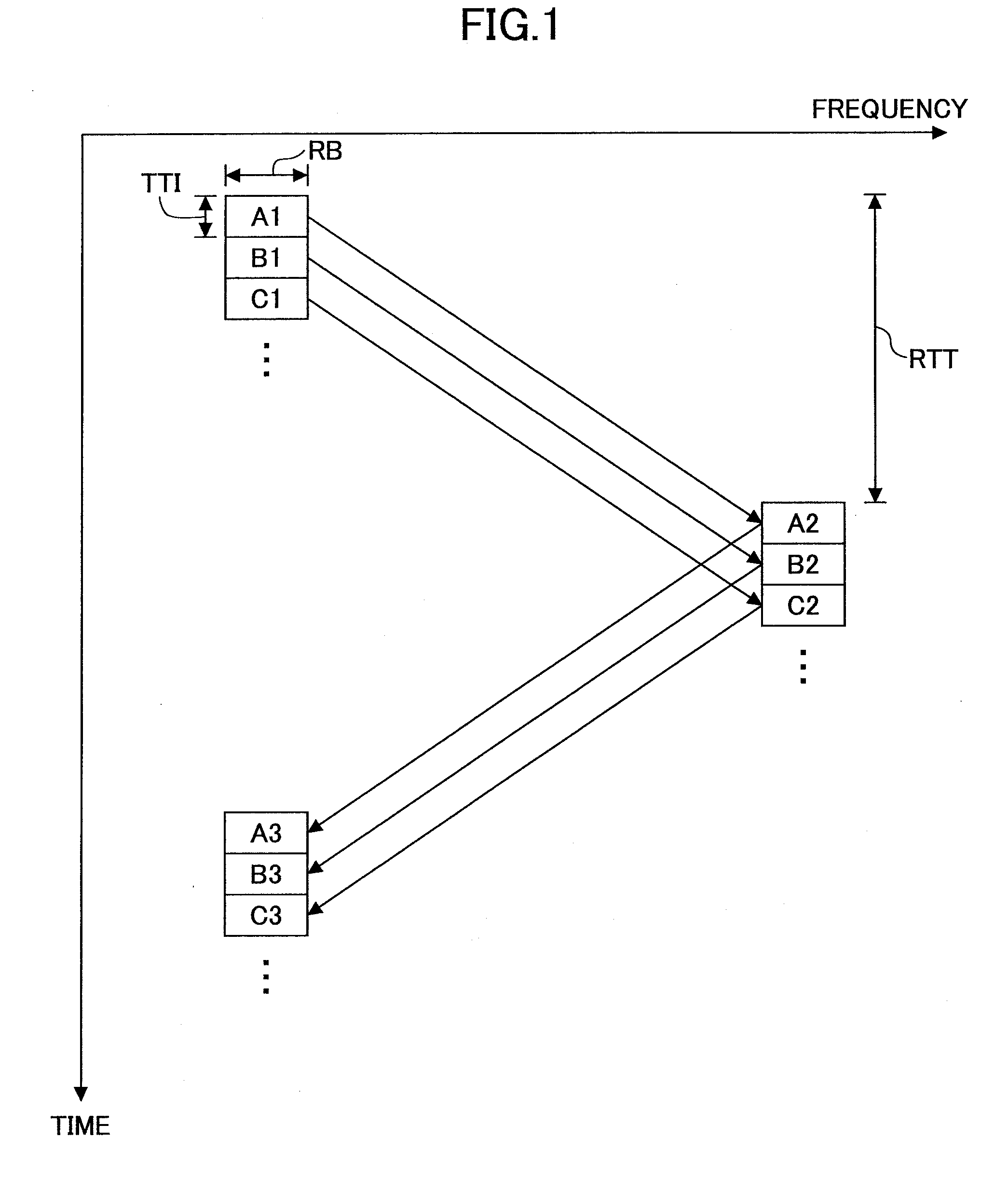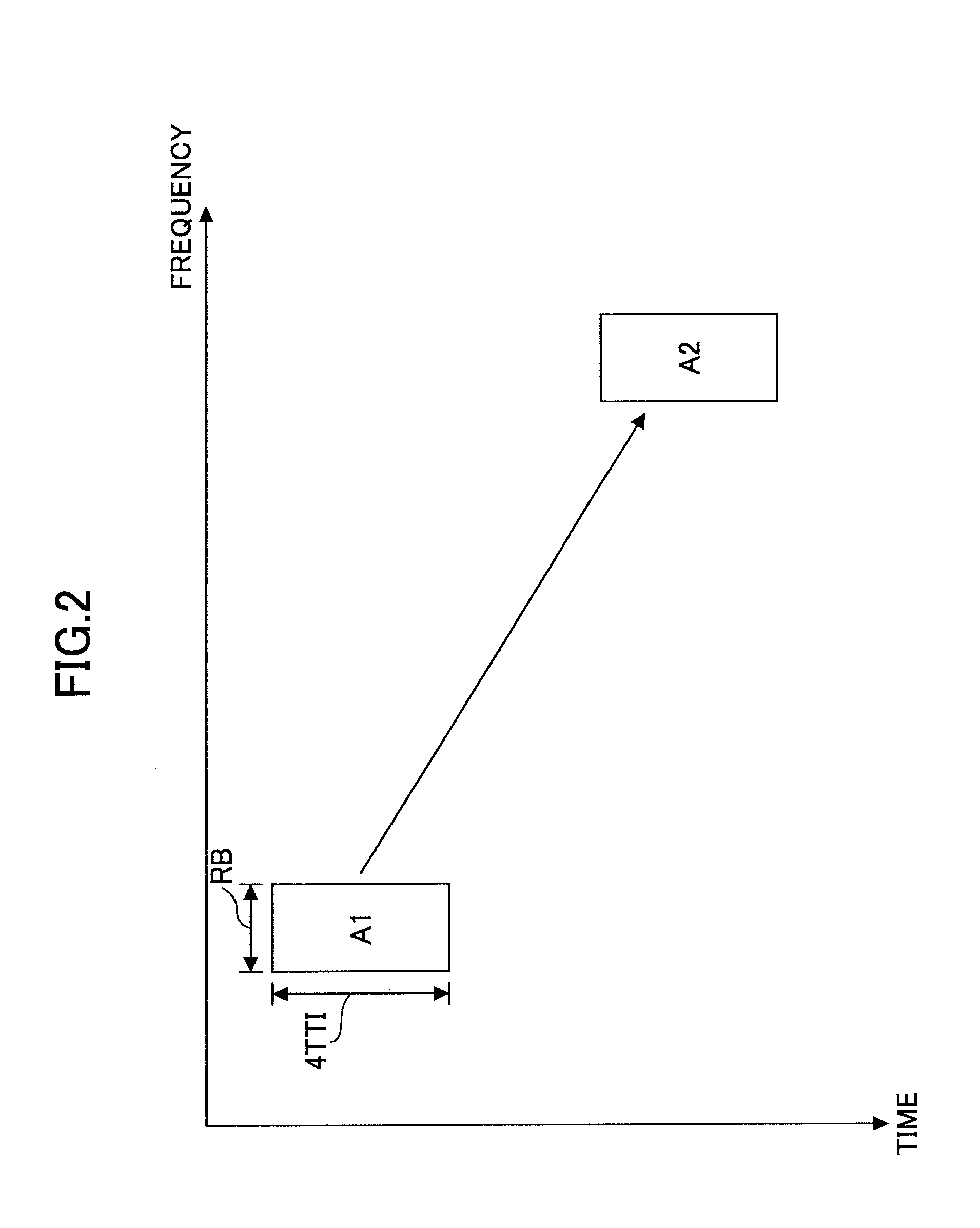Base station apparatus and method in mobile communication system
a mobile communication system and base station technology, applied in the field of mobile communication, can solve the problems of affecting the quality of the signal of the user apparatus residing in the cell edge, the inability to provide proper reception quality at all times, and the inability to provide proper signal quality at all times
- Summary
- Abstract
- Description
- Claims
- Application Information
AI Technical Summary
Benefits of technology
Problems solved by technology
Method used
Image
Examples
embodiment 1
1. Principle of Invention
[0057]FIG. 4 is a diagram for explaining the principle of the present invention. Similarly to FIGS. 1-3, the lateral axis indicates frequency, and the vertical axis indicates time. In FIG. 4, resource block numbers are shown in the lateral axis, and FIG. 4 indicates that 25 resource blocks in total are included in a system bandwidth (5 MHz, for example). The concrete numerical numbers such as the number of resource blocks and the system bandwidth and the like are merely examples, and any proper numbers may be used.
[0058]Similarly to the case of the example of FIG. 3, the RTT of a user apparatus that does not perform subframe bundling is 8 TTIs. The RTT of a user apparatus performing subframe bundling is 16 TTIs. FIG. 4 is similar to the case of FIG. 3 in the point that user apparatuses of different RTTs coexist. In the case of the example shown in FIG. 4, a retransmission radio resource of the user apparatus of RTT=8 TTIs is specified according to a first fr...
PUM
 Login to View More
Login to View More Abstract
Description
Claims
Application Information
 Login to View More
Login to View More - R&D
- Intellectual Property
- Life Sciences
- Materials
- Tech Scout
- Unparalleled Data Quality
- Higher Quality Content
- 60% Fewer Hallucinations
Browse by: Latest US Patents, China's latest patents, Technical Efficacy Thesaurus, Application Domain, Technology Topic, Popular Technical Reports.
© 2025 PatSnap. All rights reserved.Legal|Privacy policy|Modern Slavery Act Transparency Statement|Sitemap|About US| Contact US: help@patsnap.com



